Mourne Mountains: Who owns the County Down mountains?
- Published
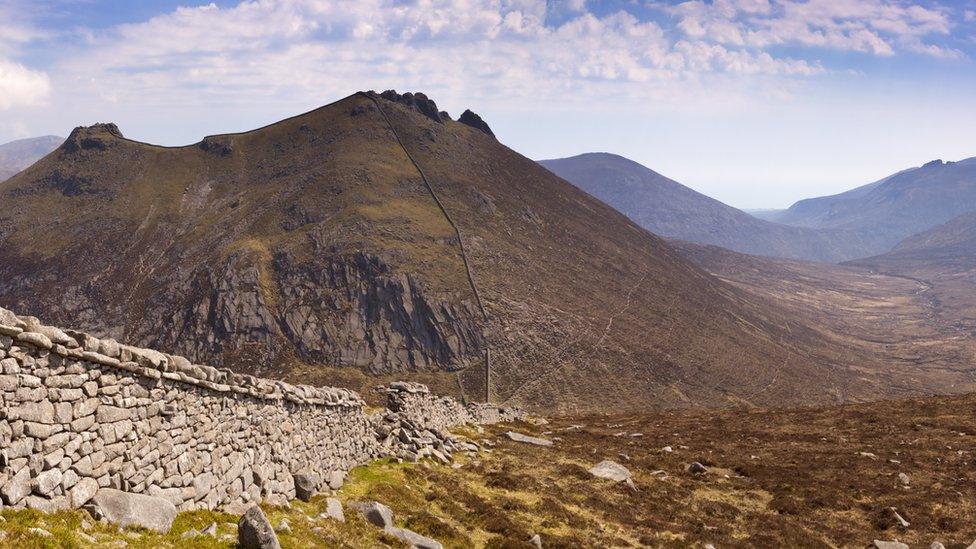
The mountains are a mix of privately and publicly owned land
The Mourne Mountains are a popular playground for lovers of the outdoors.
A compact range, they include Ulster's highest peak, Donard, and a dozen or so other major summits.
Access is easy and has worked well for years, but it's not automatic.
Large tracts are held in public ownership but significant sections are actually privately owned farmland.
In fact, 11 different sets of trustees look after ground on the slopes of the most popular mountains, managing grazing rights for hundreds of farmers.
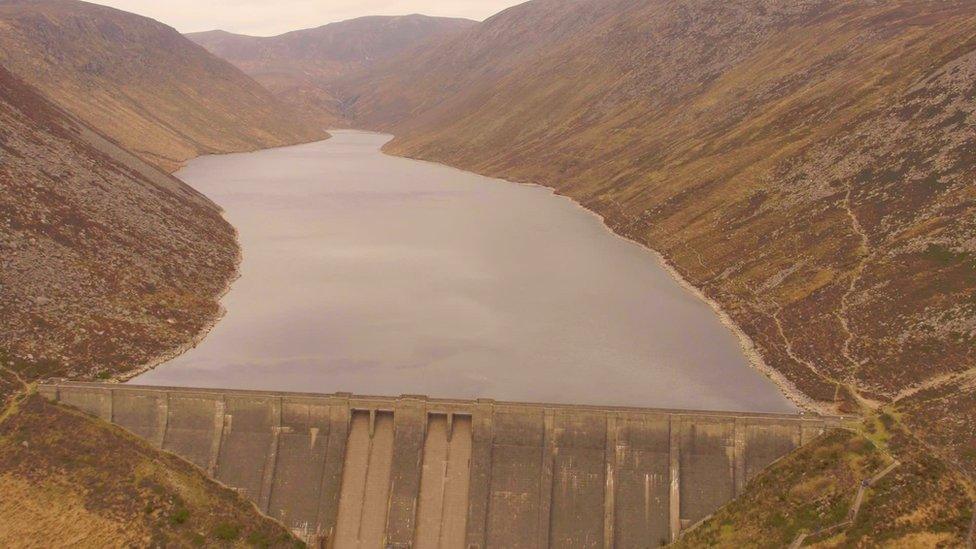
Northern Ireland Water is the biggest landowner in the mountains
Those rights date back to the Irish Land Acts of the early 1900s which saw the break-up of large private estates belonging to landlords as the land was sold back to tenant farmers.
The mountains were placed in trust and grazing rights granted to those eligible.
That means that when walkers and other users climb the mountains, they are often criss-crossing through a patchwork of privately and publicly owned land.
"The access situation is relatively little understood," said Martin Carey, who works for the Mourne Heritage Trust, a charity which helps manage the environment in what is an Area of Outstanding Natural Beauty.
"You have big chunks of public land, Northern Ireland Water and the National Trust who have access policies and allow access, and people often feel the rest of the high Mournes is public."
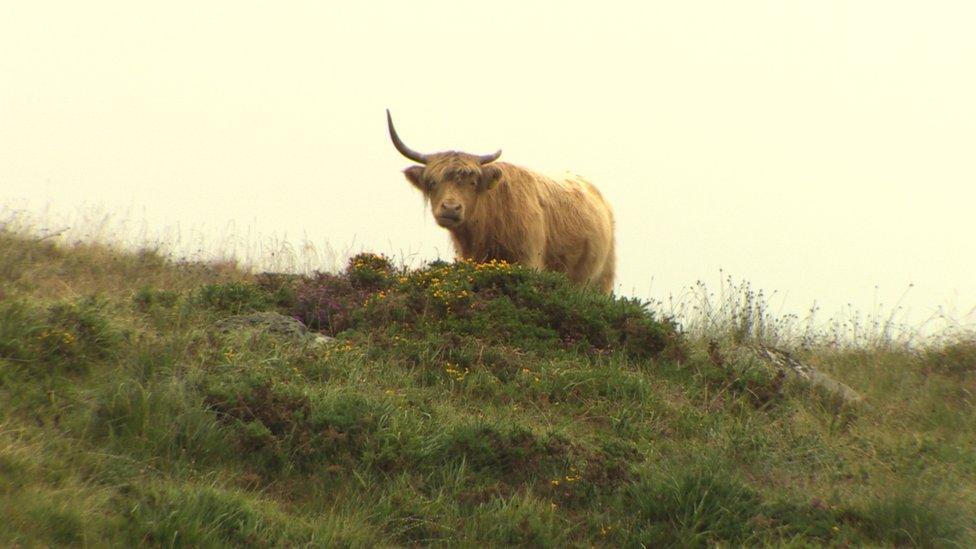
A lot of the land on the Mournes is privately owned
"But a lot of it is private farmed land where there is no right of access, but there has been a long tradition and generally the farmers will tolerate access where it is done where it's carried on in a responsible manner.
"So you are often in the Mournes at the behest and good grace of a landowner, whether it's public or private."
In other words, keep dogs under control, close gates to stop livestock wandering and take litter home.
Sean Fitzpatrick, a trustee for the Mournes Middle, said there were relatively few problems given the volume of recreational users.
That said, he would prefer it if large groups of walkers stopped pushing sheep ahead of them as they walked.
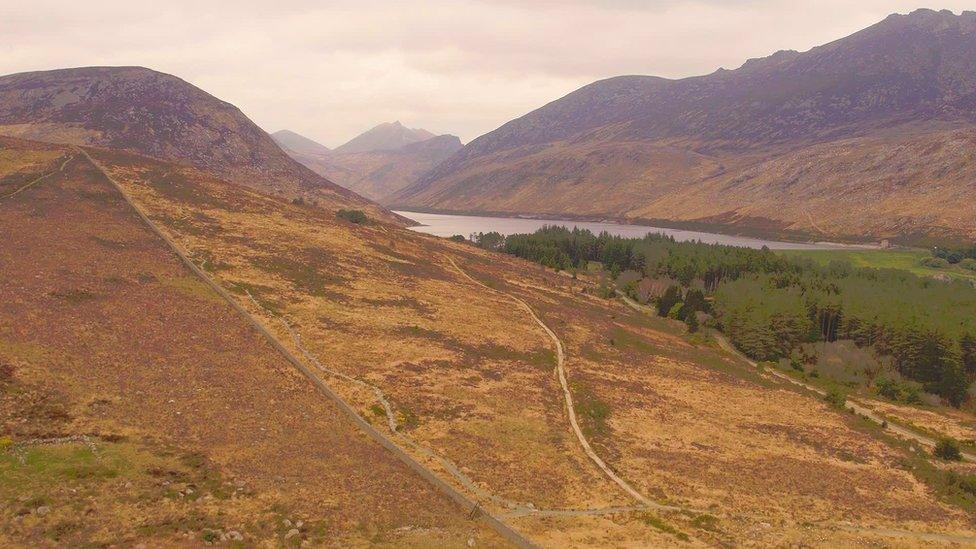
"They should do the same as they would do in a car, pull out to the right or left of them and don't walk through sheep to split them and move them off their pasture."
Probably the biggest landowner in the mountains is Northern Ireland Water.
It bought 9,000 acres in the early 1900s to secure a supply of drinking water for the growing city of Belfast.
During the 19th Century, the population of the city grew from 20,000 to 350,000 and the mills and shipyard had a huge demand for water.
Two large dams were built and the catchment was encircled by the Mourne Wall.
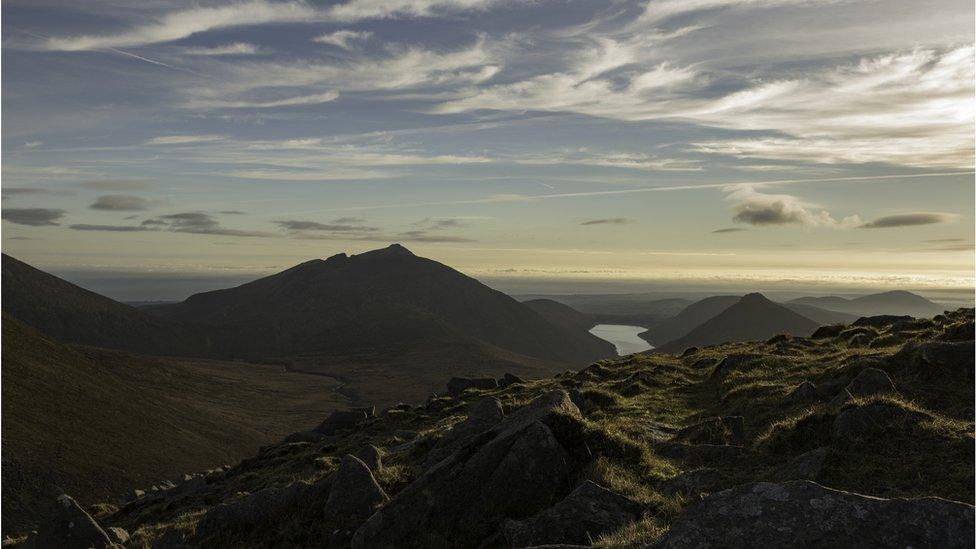
In the 1900s the mountains were placed in trust and grazing rights granted to those eligible
"Whenever we're running at full flow, there's certain times of the year when we're supplying a quarter of the population of Northern Ireland," said NI Water's Maynard Cousley.
All of this is done using gravity from a valley nestled in the mountains.
The final piece of the ownership jigsaw is the National Trust, which owns the "big two" - Donard and Commedagh - which tower over Newcastle.
It bought them in 1990 from the Annesley Estate and manages access on one of the busiest routes into the mountains - the Glen River track - from Newcastle to Slieve Donard.
In the coming years it's spending £250,000 on improving the path network in the 582 hectares it controls and is encouraging walkers to stick to them.
Heather McLachlan, the charity's regional director, said tens of thousands of people use the track every year and erosion is something they're working hard to mitigate.
"A lot more people are accessing the mountain. What we're looking at is how do we help those people enjoy it but also protect the beautiful mountain heath that Donard is designated for as a special place."